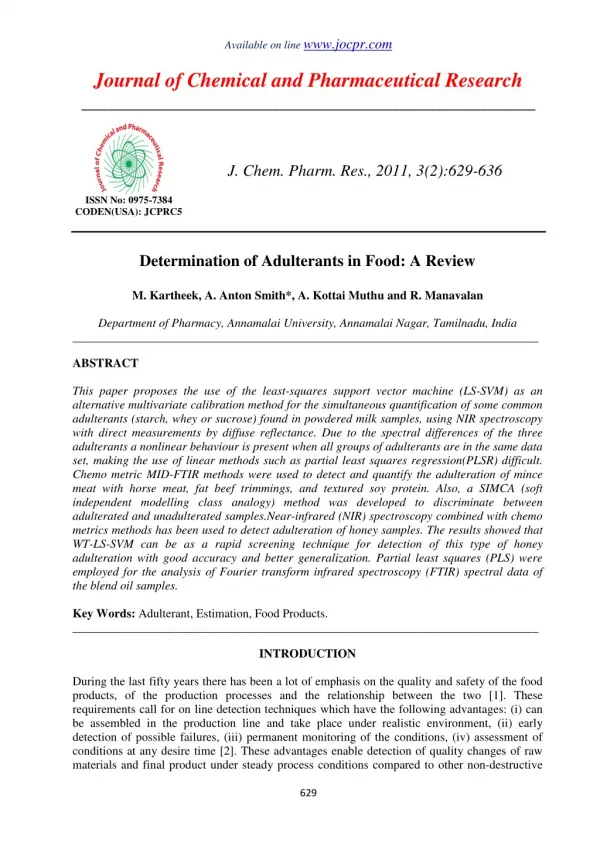Determination of Adulterants in Food: A Review
This paper proposes the use of the least-squares support vector machine (LS-SVM) as an alternative multivariate calibration method for the simultaneous quantification of some common adulterants (starch, whey or sucrose) found in powdered milk samples, using NIR spectroscopy with direct measurements by diffuse reflectance. Due to the spectral differences of the three adulterants a nonlinear behaviour is present when all groups of adulterants are in the same data set, making the use of linear methods such as partial least squares regression(PLSR) difficult. Chemo metric MID-FTIR methods were used to detect and quantify the adulteration of mince meat with horse meat, fat beef trimmings, and textured soy protein. Also, a SIMCA (soft independent modelling class analogy) method was developed to discriminate between adulterated and unadulterated samples.Near-infrared (NIR) spectroscopy combined with chemo metrics methods has been used to detect adulteration of honey samples. The results showed that WT-LS-SVM can be as a rapid screening technique for detection of this type of honey adulteration with good accuracy and better generalization. Partial least squares (PLS) were employed for the analysis of Fourier transform infrared spectroscopy (FTIR) spectral data of the blend oil samples.
★
★
★
★
★
93 views • 8 slides

